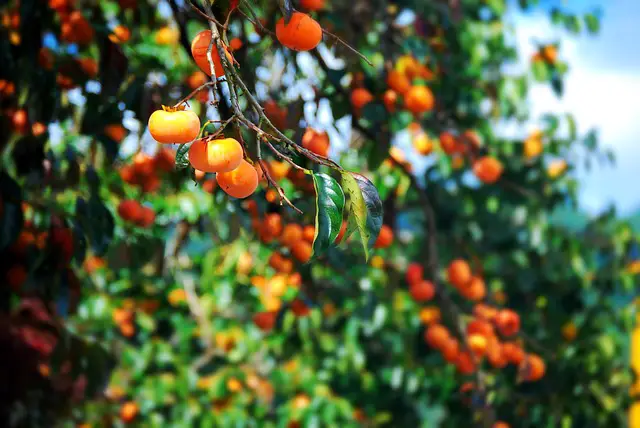
I took a gamble in my own backyard fruit grove a few years ago. I saw a ‘Fuyu’ persimmon tree for sale at the local nursery and impulse won out…I bought it right then and there. I’d heard that persimmon trees did well in my area, but that was the extent of my knowledge about growing this fruit.
Fast forward to now, and thankfully, I can report that my gamble paid off. Not only are persimmon trees beautiful and the fruit delicious, but I have found persimmon trees to be startlingly easy to grow. And I’m not alone – other gardeners agree.
Persimmon trees are easy to grow and care for in the home garden, which makes them a perfect choice for beginner gardeners. Persimmons can adapt to a wide variety of growing conditions and require little maintenance to thrive.
It’s rare in the garden to buy a plant that you basically just put in the ground, sit back and watch, and reap the benefits. And it’s even more rare in the world of fruit trees. But growing persimmons is actually that simple in most cases. Let’s take a look at what makes persimmons easy to grow at home.
They’re Adaptable to Different Growing Conditions
The first thing to learn about persimmons is that they are classified into a few main categories: American vs. Asian (or Oriental/Japanese), and astringent vs. non-astringent. Thankfully, there’s a variety for just about every climate – and taste, for that matter.
In general, American persimmons are more cold-tolerant (hardy to USDA zone 5) and are often found in northern climates, such as the midwestern or northeastern parts of the U.S. Asian persimmons (also known as Oriental or Japanese) grow well in warmer, southern climates, and are suited for zones 7-11.
Learn more: American vs. Asian Persimmons: What’s the Difference?
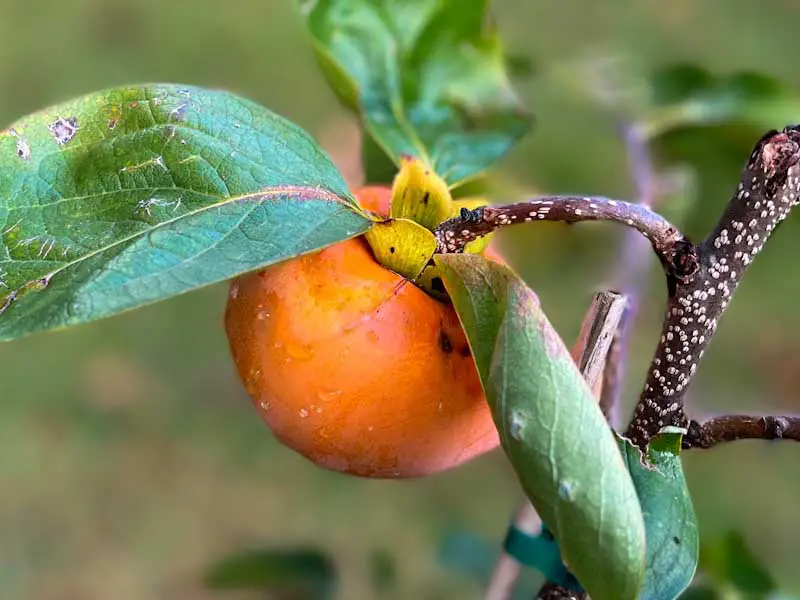
Persimmon trees are not picky about the type of soil they grow in. It’s best not to amend the soil where you plant a persimmon tree so the roots can adapt to the nutrient availability at that site. As long as the soil drains fairly well and doesn’t stay soggy for long periods of time, the tree should be happy.
Most Asian persimmons (such as ‘Fuyu’ and ‘Tanenashi’) are self-pollinating, meaning they produce both male and female flowers on the same tree and therefore don’t require a second tree for pollination. Asian persimmons also can produce seedless fruit without any pollination at all.
Related: Persimmon Pollination: Do You Need Two Trees?
American persimmon varieties typically do need two trees for pollination – a male and a female. These trees are native to the U.S. (as the name suggests) and you often find them growing wild. In your garden, the simplest choice is probably a self-pollinating Asian persimmon variety.
You can even grow persimmon trees in pots, provided you keep potting up to a bigger size as the trees grow. I recommend only growing Asian persimmons in containers, however; the American varieties grow much larger, and they have a long taproot that needs more room than a pot can give.
They’re Easy to Care For
One of the best things about persimmon trees is that they are virtually disease- and pest-free with little help from the gardener. How many fruit trees can you say that about? (Answer – few to none!)
In some cases a persimmon tree might be affected by leaf spot or crown gall, but these problems are uncommon and are usually not fatal to a well-established tree. American persimmons are a bit more prone to pest problems than Asian varieties (which have few insect issues). Sometimes caterpillars may eat the leaves, or you may see mites, ants, or fruit flies on the tree, but these rarely cause major problems.
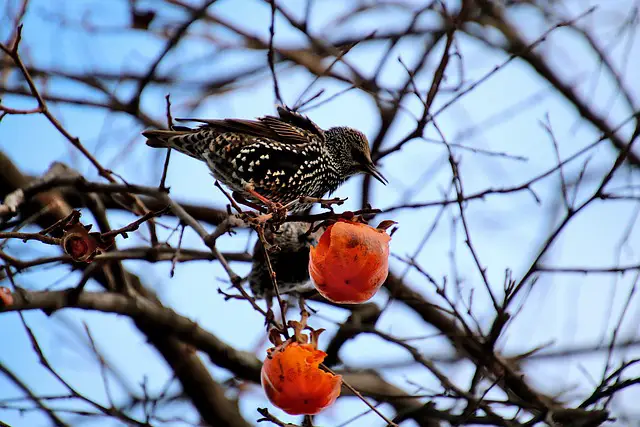
The biggest “pests” to persimmons are the larger wildlife. Deer, opossums, raccoons, birds, and other critters like to eat the sweet fruits as much as humans do. Chances are, though, the persimmon tree will produce enough fruit to go around.
Persimmon trees are also fairly drought-tolerant. It’s always a good idea to water a newly-planted fruit tree regularly, but once it’s established in the landscape, persimmon trees generally need little additional water. They can withstand short periods of drought, but if hot, dry weather persists than it’s a good idea to give the tree a drink. Too much drought stress could cause the persimmons to drop early.
Persimmon trees also require minimal pruning. If you were to never pick up the pruning shears, your persimmon tree would likely still produce abundant, delicious fruit. You may want to prune a bit to manage the size of the tree, however, and encourage the fruit to grow larger.
Learn more: Pruning an Asian Persimmon Tree in 5 Simple Steps
When left unpruned, a persimmon tree will probably produce a large crop every other year. Moderate pruning every winter while the tree is dormant will encourage the tree to fruit annually. Simply remove crossing, diseased, or dead branches, and maybe trim back leggy branches by about a third. Keep it simple.
They’re Easy to Use and Enjoy
Persimmons are a wonderful, nostalgic, old-fashioned fruit. My grandparents had wild American persimmon trees growing on their farm, and every year my dad would bring bags of the ripe fruit to school to share with his classmates. Those kids quickly learned the difference between a fully ripe persimmon and one that wasn’t ready yet, though.
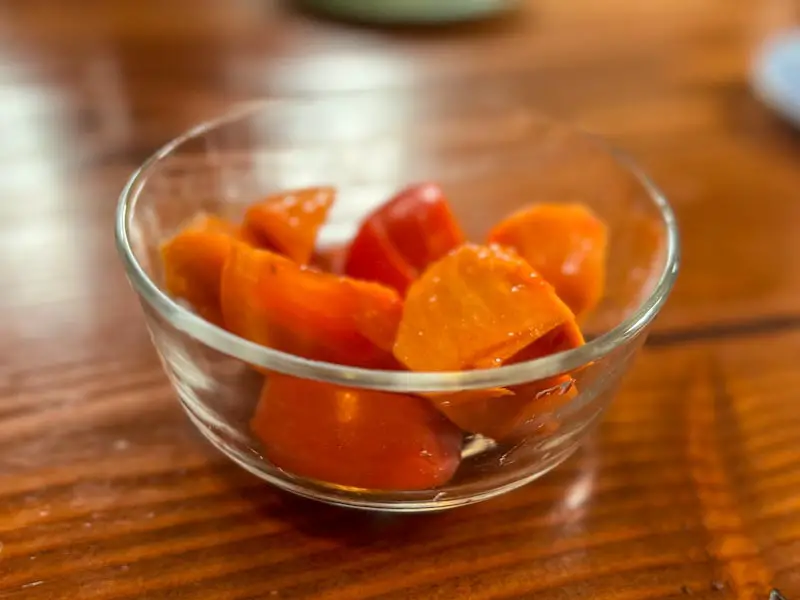
If your only memory of eating a persimmon is the mouth-puckering bitterness of an under-ripe fruit, then you are missing out on something amazing. Those astringent persimmons are as sweet as maple syrup when ripe. Wait to eat an astringent variety until the fruit is very soft, puckered-looking, and jelly-like. All you need is a spoon to scoop up the jammy pulp.
Related: Astringent vs. Non-Astringent Persimmons: What’s the Difference?
Non-astringent varieties (such as ‘Fuyu’ and ‘Izu’) are also extremely sweet, but they can be picked and eaten while they are still firm. The texture ranges between a crisp, sweet apple and a firm, juicy peach, depending on when they are picked. The longer you wait to pick the fruit, the softer and juicier it will be (similar to a pear). I find the flavor reminds me of a sugary-sweet plum or a ripe peach without the “peachy” flavor.
Both types are delicious eaten fresh. Asian varieties are the ones typically found in the grocery store, although they will always be far inferior to what you can grow in your garden. American persimmons are too delicate to ship to stores – all the more reason to grow them at home.
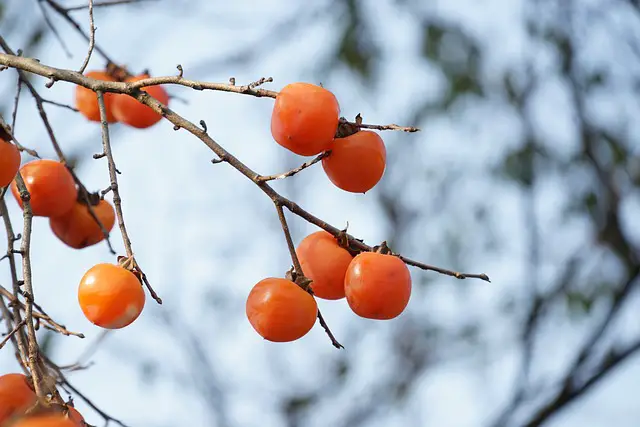
Sun-dried persimmons (known as hoshigaki in Japan) are a delicacy in Asian countries. Persimmons can be baked in breads, cookies, pastries, and they make delicious jam or fruit butter. Persimmon pulp can even be frozen and used in smoothies or saved for future recipes.
Persimmons usually ripen around the time of the first frost, which means the tree could be bare of leaves but laden with bright orange, jewel-like fruit. Before that, the leaves typically turn orange, yellow and red. These trees are stunning in a fall and winter garden.
A fruit that is beautiful, delicious, versatile, and easy to grow? Sign me up.

